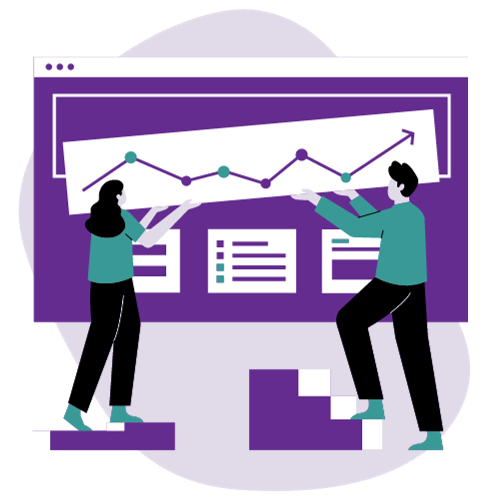Bringing your research to life with infographics
Infographics are visually engaging representations of information using a combination of images, charts, icons, or illustrations with minimal text in a format that tells a story.
This section explains the benefits of using infographics and provides advice on how to produce infographics, including recommended tools and software, training providers, best practice, and selection of further resources to help you produce your own impactful visualisations and increase the impact of your research.
Increasing the reach and impact of your research using infographics
![]() Infographics can be an incredibly effective research communication tool. Presenting information in a visual format helps your target audiences digest complex data and research findings more quickly and easily than text alone. Producing an infographic can also help you to identify the key messages and critical details from your research.
Infographics can be an incredibly effective research communication tool. Presenting information in a visual format helps your target audiences digest complex data and research findings more quickly and easily than text alone. Producing an infographic can also help you to identify the key messages and critical details from your research.
The main purpose of an infographic is to provide a clear, engaging, and easy-to-understand summary of the information you want to get across to the reader in a compact form. Researchers can use infographics in a variety of ways, including to summarise a topic or academic paper, describe a process or timeline, or present data in a more accessible format.
Infographics can be a powerful communications tool in your research mobilisation toolbox – they help to catch people’s attention and allow them to digest large amounts of information in a short space of time. They can also be easily shared on social media platforms, helping to increase the visibility of your research, key messages, and recommendations for policy and practice to a wide audience. Find out more about Using social media to disseminate your research
How to create infographics online
Now that you’ve been convinced infographics are the way to go with disseminating your research, you may be wondering how you can actually go about producing your own.
 Thankfully, there are many online platforms for creating visual content out there that will help you do just that. Many are free to use and will allow you to add visual content including basic images, iconography, fonts, and sometimes even pre-designed templates that can be customised to your specific needs. These platforms are often easy to use and provide helpful guides and tutorials for creating different types of visual content.
Thankfully, there are many online platforms for creating visual content out there that will help you do just that. Many are free to use and will allow you to add visual content including basic images, iconography, fonts, and sometimes even pre-designed templates that can be customised to your specific needs. These platforms are often easy to use and provide helpful guides and tutorials for creating different types of visual content.
While most of these online platforms are free to use, they will usually also offer a premium, paid-for service that will often unlock the use of more complex functionality, access to bigger image and icon libraries, and allow you to save your content to a wider range of file formats.
We’ve compiled a list of popular online platforms for creating infographics below, detailing their pros and cons to help you decide which one to use.
Best practice for creating infographics
- Do consider your organisation’s brand guidelines as you may use their official brand colours, fonts and logos.
- Do keep the text simple and to a minimum. Instead of using text, try to use visuals to tell the story.
- Do pull out the key stats you want to highlight in the graphic.
- Do use the best image dimensions appropriate for where you want to share the final graphic.
- Don’t forget to include key information about how people can find out more about your work. You may want to consider using a QR code linking to the research paper or project page of your website.
- Do make your content as accessible as possible. This includes:
- Ensuring your colour palette adheres to correct colour contrast ratios
- Using sans-serif fonts as much as possible
- Using a large font size
- Arranging the different elements of your infographic so they follow a clear hierarchy
- Ensuring the use of headings and sub-headings follows a clear structure
- Writing in plain English
- Do use inclusive icons and images where possible. For instance, the Centre for Better Aging has an extensive library of images depicting older people in a non-stereotypical way.
Training providers
We’ve compiled a selection of organisations that provide training opportunities, online courses and video tutorials specific to either data visualisation or creating infographics.
General training
For general training on data visualisation and creating infographics, you may wish to investigate courses run by the following organisations
Adobe Illustrator training
If you’re interested in learning how to use bespoke software such as Adobe Illustrator to create infographics, you could investigate training courses provided by the following organisations:
Tutorials for creating online infographics
All three of the platforms mentioned in this section have their own YouTube channels where they upload short tutorials for creating visual content.
